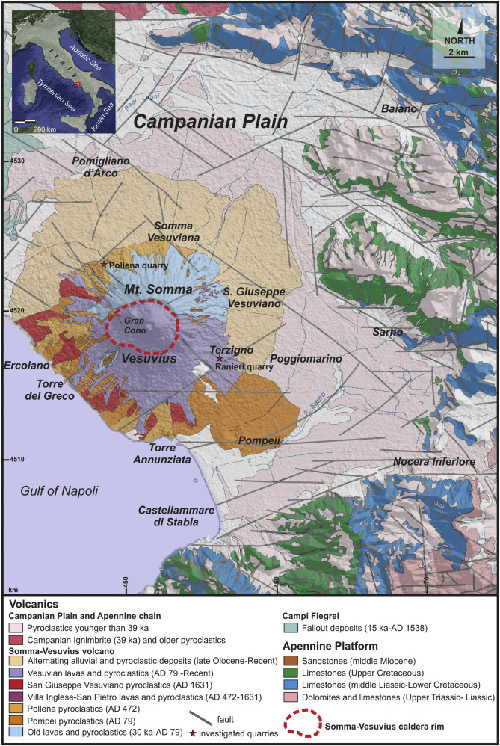Relation between alternating open/closed-conduit conditions and deformation patterns: An example from the Somma-Vesuvius volcano (southern Italy)

Tramparulo F.D.A. , S. Vitalea, R. Isaia, A. Tadini, M. Bisson, E.P. Prinzi (2018).
Journal of Structural Geology, 112, 138-153, https://doi.org/10.1016/j.jsg.2018.05.008.
Abstract
We present the results of a meso-scale systematic structural analysis of fractures, faults and dykes exposed at the Somma-Vesuvius volcano (southern Italy). Observed fractures include: (i) radial and tangential (with respect the caldera axis), sub-metric to metric joints associated with the edifice load and volcano-tectonic activity (i.e. inflation, deflation and caldera collapse stages) and (ii) decameter-scale fractures related to volcano flank instabilities. For the Somma-Vesuvius volcano, preexisting radial joints were commonly reactivated as transfer faults during the caldera formation, allowing different blocks to move toward the center of the collapsing area. Dykes occur with different geometries, including en-echelon structures bounding structural depressions. The orientation analysis of all structures indicates that they are preferentially oriented. Furthermore, we provide a morphological lineament analysis using high-resolution Digital Terrain Models of Somma-Vesuvius. Azimuth and spatial distribution of dykes and morphological lineaments were analyzed for comparison with the old Somma Crater and Gran Cono axes, respectively. Results highlight the overprinting of radial and clustered strain patterns recorded in different volcano-tectonic evolution stages. We suggest a possible deformation evolution model in which structures develop along either radial or preferential trends, highlighting different volcanic conditions: (i) where radial patterns occur, the structures developed during volcanic inflation cycles with a closed magmatic conduit condition whereas (ii) clustered patterns are probably associated with a regional strain field that overcomes the local deformation field, a situation typical in the case of open-conduit activity.


Devi effettuare l'accesso per postare un commento.